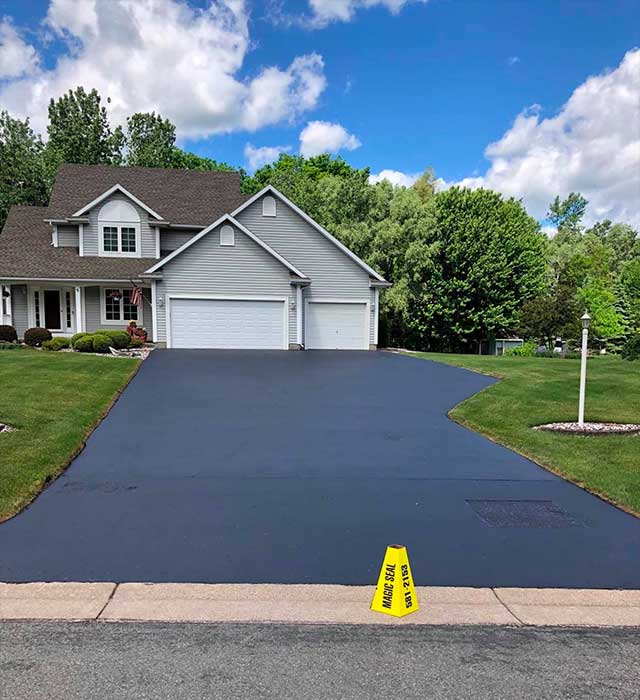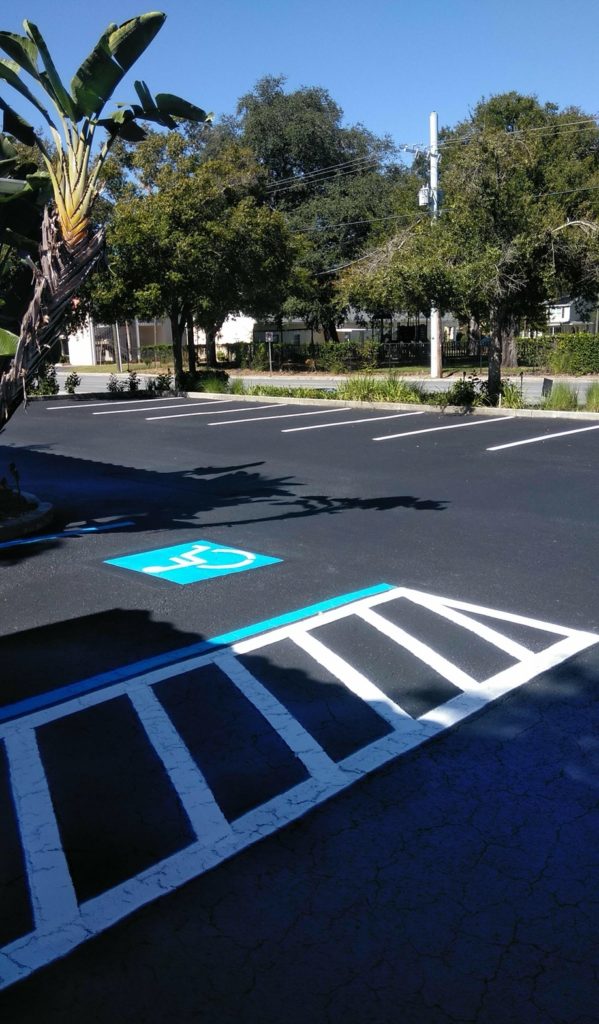Enhance Toughness: Hot Mix Asphalt Sealing for Angled Parking Frameworks
Enhance Toughness: Hot Mix Asphalt Sealing for Angled Parking Frameworks
Blog Article
Warm Mix Asphalt: A Lasting Solution for Sidewalk
Warm Mix Asphalt (HMA) has actually emerged as a leading sustainable choice for pavement solutions, providing a myriad of environmental benefits and innovative innovations. Its capacity to reuse products and decrease power usage provides an engaging case for its fostering in road building and construction tasks. The long-term performance and resilience of HMA make it a favored alternative for infrastructure development. As the demand for environmentally friendly construction practices grows, exploring the nuances of HMA's sustainability can supply important understandings right into the future of pavement remedies.
Environmental Benefits of Warm Mix Asphalt

Furthermore, Hot Mix Asphalt aids to reduce metropolitan warm island impacts. Its dark shade soaks up sunshine, decreasing the quantity of heat mirrored back into the environment compared to lighter-colored pavements. This can decrease ambient temperatures in city areas, lowering the need for cooling and eventually minimizing energy intake.
Additionally, Warm Mix Asphalt contributes to improved stormwater administration. Its porous nature permits water to infiltrate the sidewalk and charge groundwater materials, lowering runoff and the danger of flooding. These ecological advantages make Warm Mix Asphalt a lasting option for leading highways and roadways.
Power Performance in HMA Production
Is energy performance an important aspect in the manufacturing of Warm Mix Asphalt (HMA)? Definitely. Energy plays a considerable duty in the manufacturing of HMA, affecting both cost and ecological sustainability. One essential facet of energy efficiency in HMA production is making use of cozy mix asphalt (WMA) modern technologies (regrading). WMA allows for the mixing and positioning of asphalt at lower temperatures contrasted to conventional warm mix asphalt, leading to lowered power usage throughout production. This process not only decreases fuel use but likewise lowers greenhouse gas exhausts, making it a more environmentally pleasant option.
Furthermore, developments in plant modern technologies have actually led to even more energy-efficient HMA manufacturing procedures. By optimizing energy usage in HMA manufacturing, the sector can reduce its carbon footprint while keeping premium pavement products.
Recyclability of Hot Mix Asphalt
The recyclability of Warm Mix Asphalt (HMA) is a crucial facet of its sustainability and long-lasting environmental impact. HMA is just one of one of the most recycled materials in the USA, with over 100 million lots of reclaimed asphalt pavement (RAP) being recycled annually in new sidewalk construction. Reusing HMA uses a number of environmental benefits, such as lowering the demand for virgin products, decreasing energy consumption during production, and decreasing the amount of waste sent out to garbage dumps.
The procedure of reusing HMA involves grating the existing sidewalk, squashing it into smaller items, and blending it with brand-new aggregate and asphalt binder to develop a recycled mix. This recycled mix can frequently carry out in addition to and even better than conventional HMA, while needing fewer raw materials and creating reduced greenhouse gas exhausts. By incorporating RAP into brand-new pavement jobs, road agencies can conserve natural deposits, lower costs, and minimize the environmental impact of roadway building and upkeep tasks. Generally, the recyclability of HMA plays a significant role in promoting sustainable techniques within the sidewalk industry.

Long-Term Efficiency of HMA
Asphalt sidewalks show sturdiness and durability over an extensive duration, mirroring the long-lasting efficiency of Hot Mix Asphalt (HMA) The longevity of HMA can be associated to its ability to endure rush hour lots, extreme climate condition, and the impacts of aging. Studies have actually revealed that well-designed and properly built HMA pavements can last for 20 years or even more tips here more with routine upkeep. The trick to taking full advantage of the long-term performance of HMA depends on making use of high-quality products, adhering to finest methods in building, and applying efficient upkeep strategies. Appropriate water drainage, regular inspections, and prompt repair work are essential for preserving the architectural integrity of HMA pavements over time. Additionally, advancements in HMA modern technology, such as making use of polymer-modified binders and warm mix asphalt, have additionally improved the toughness and durability of HMA pavements. By prioritizing quality construction and upkeep techniques, HMA remains to show itself as a lasting and cost-effective service for durable sidewalk framework.

HMA: Durability and Sustainability
Showing both durability and sustainability, Hot Mix Asphalt (HMA) has actually ended up being a cornerstone in the building of lasting sidewalk infrastructures - angled parking. HMA's toughness comes from its capacity to endure heavy tons, harsh weather, and high traffic volumes, making it a reputable choice for roads, highways, and flight terminal paths. The composition of HMA, which typically consists of aggregates, binder, and filler, plays a crucial function in enhancing its durability and useful content resistance to tear and wear
Additionally, HMA's sustainability depends on its recyclability and energy-efficient production procedure. The capacity to reuse reclaimed asphalt sidewalk (RAP) in brand-new HMA mixes lowers the need for virgin materials and lessens the ecological influence of sidewalk building and construction and maintenance. In addition, the power performance of creating HMA hinges on its lower blending temperatures compared to other sidewalk materials, resulting in decreased power intake and greenhouse gas discharges.
Conclusion
Finally, hot mix asphalt (HMA) supplies a lasting service for pavement with its eco-friendly characteristics. HMA's recyclability, energy effectiveness in production, and lasting resilience make it an environment-friendly option for roadway building. By conserving natural deposits, minimizing waste, and reducing greenhouse gas discharges, HMA plays a crucial duty in promoting sustainability in framework growth. Its ability to minimize city heat island impacts additionally highlights its importance in creating resilient and environmentally aware sidewalk systems.
HMA is one of the most recycled products in the United States, with over 100 million tons of reclaimed asphalt sidewalk (RAP) being reused annually in brand-new pavement building and construction.The procedure of reusing HMA includes milling the existing pavement, crushing it into smaller sized pieces, and blending it with brand-new aggregate and asphalt binder to create a recycled mix.Asphalt sidewalks show sturdiness and resilience over a prolonged period, showing the long-lasting performance of Hot Mix Asphalt (HMA) Additionally, developments in HMA modern technology, such as the use of polymer-modified binders and cozy mix asphalt, have actually additionally enhanced the toughness and long life of HMA sidewalks. The capability to reuse recovered asphalt sidewalk (RAP) in new HMA mixes reduces the need for virgin materials and these details lessens the environmental effect of pavement building and construction and upkeep.
Report this page